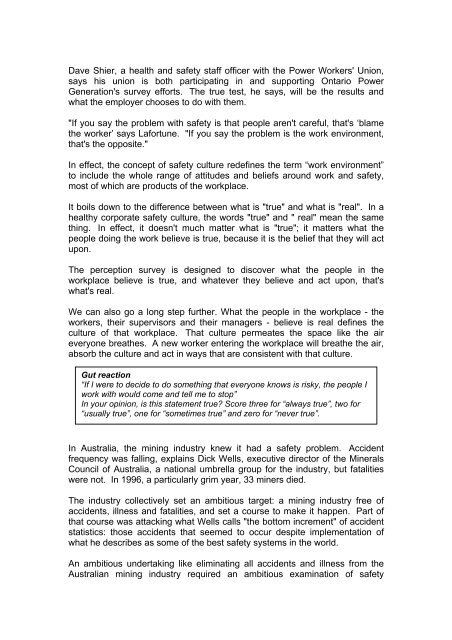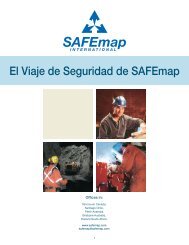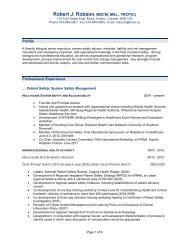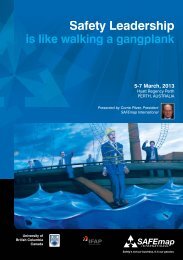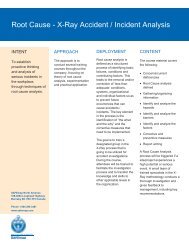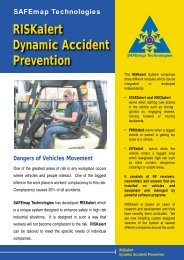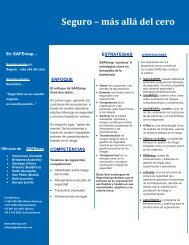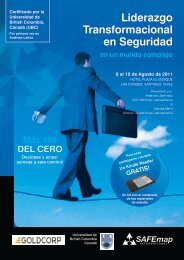A Matter of Perception - SAFEmap International
A Matter of Perception - SAFEmap International
A Matter of Perception - SAFEmap International
You also want an ePaper? Increase the reach of your titles
YUMPU automatically turns print PDFs into web optimized ePapers that Google loves.
Dave Shier, a health and safety staff <strong>of</strong>ficer with the Power Workers' Union,says his union is both participating in and supporting Ontario PowerGeneration's survey efforts. The true test, he says, will be the results andwhat the employer chooses to do with them."If you say the problem with safety is that people aren't careful, that's ‘blamethe worker’ says Lafortune. "If you say the problem is the work environment,that's the opposite."In effect, the concept <strong>of</strong> safety culture redefines the term “work environment”to include the whole range <strong>of</strong> attitudes and beliefs around work and safety,most <strong>of</strong> which are products <strong>of</strong> the workplace.It boils down to the difference between what is "true" and what is "real". In ahealthy corporate safety culture, the words "true" and " real" mean the samething. In effect, it doesn't much matter what is "true"; it matters what thepeople doing the work believe is true, because it is the belief that they will actupon.The perception survey is designed to discover what the people in theworkplace believe is true, and whatever they believe and act upon, that'swhat's real.We can also go a long step further. What the people in the workplace - theworkers, their supervisors and their managers - believe is real defines theculture <strong>of</strong> that workplace. That culture permeates the space like the aireveryone breathes. A new worker entering the workplace will breathe the air,absorb the culture and act in ways that are consistent with that culture.Gut reaction“If I were to decide to do something that everyone knows is risky, the people Iwork with would come and tell me to stop”In your opinion, is this statement true? Score three for “always true”, two for“usually true”, one for “sometimes true” and zero for “never true”.In Australia, the mining industry knew it had a safety problem. Accidentfrequency was falling, explains Dick Wells, executive director <strong>of</strong> the MineralsCouncil <strong>of</strong> Australia, a national umbrella group for the industry, but fatalitieswere not. In 1996, a particularly grim year, 33 miners died.The industry collectively set an ambitious target: a mining industry free <strong>of</strong>accidents, illness and fatalities, and set a course to make it happen. Part <strong>of</strong>that course was attacking what Wells calls "the bottom increment" <strong>of</strong> accidentstatistics: those accidents that seemed to occur despite implementation <strong>of</strong>what he describes as some <strong>of</strong> the best safety systems in the world.An ambitious undertaking like eliminating all accidents and illness from theAustralian mining industry required an ambitious examination <strong>of</strong> safety


